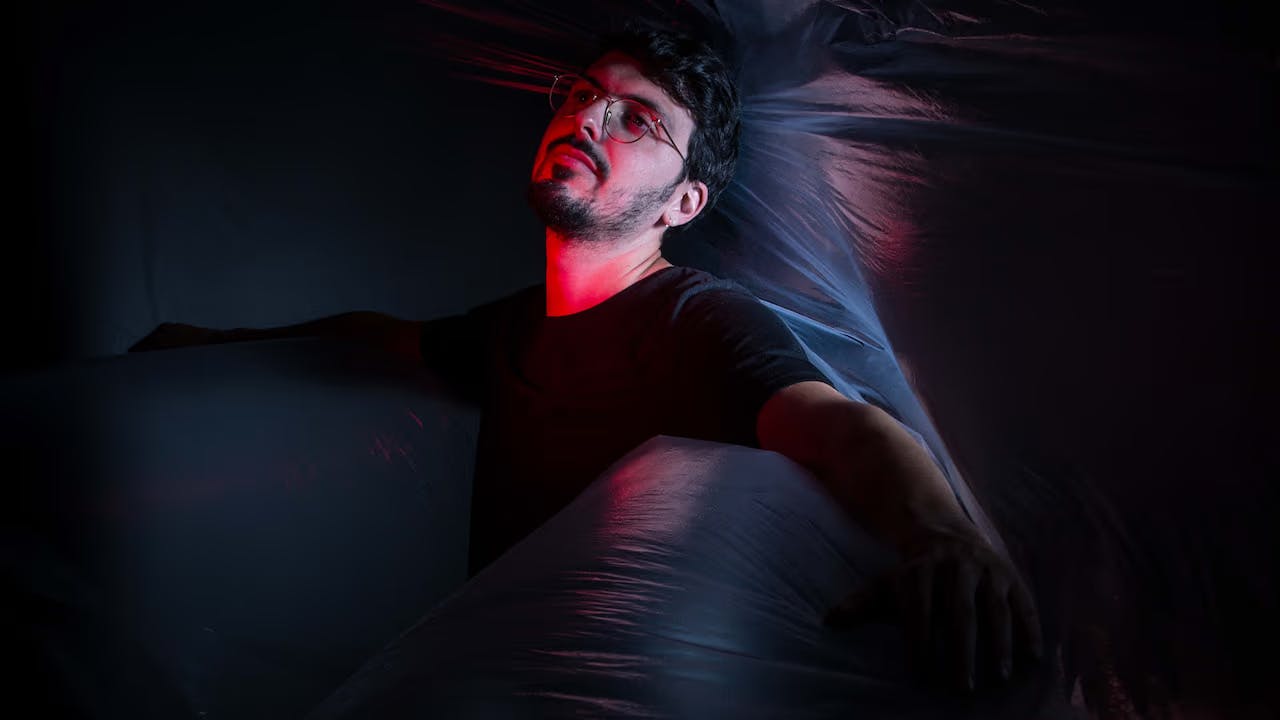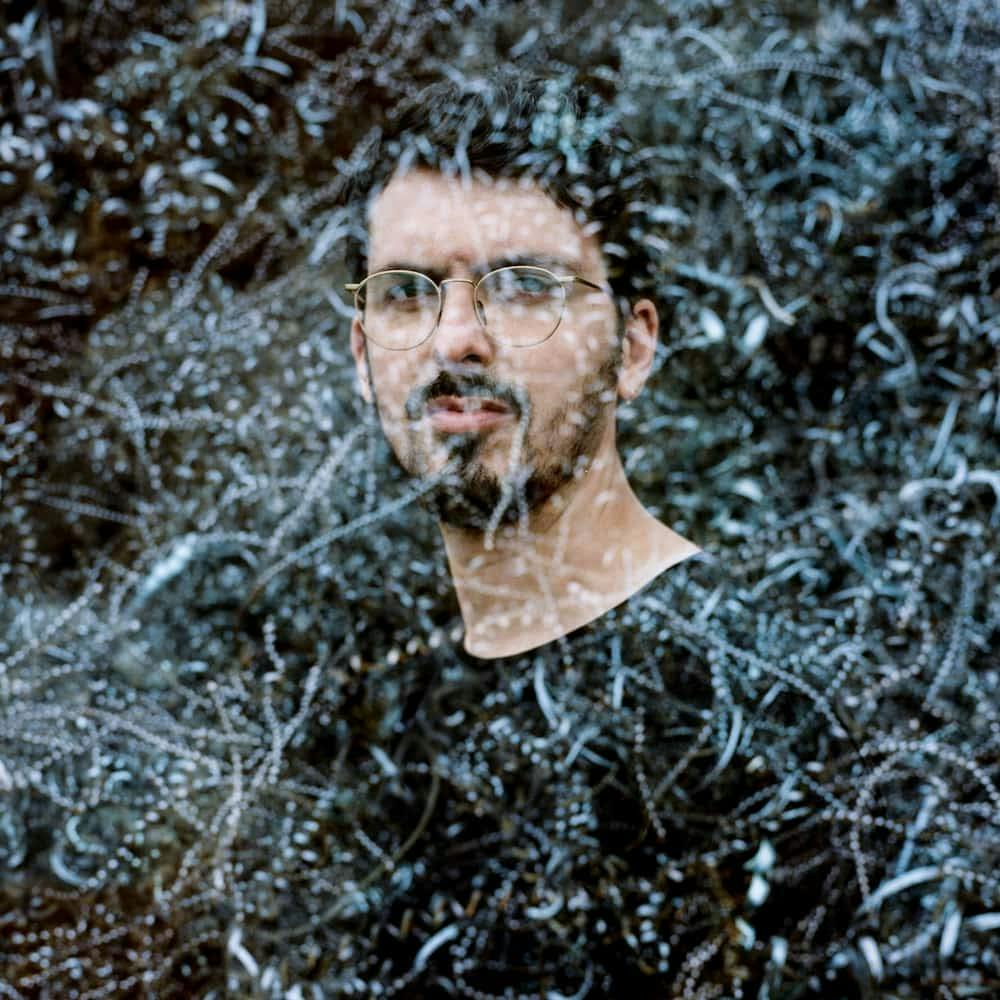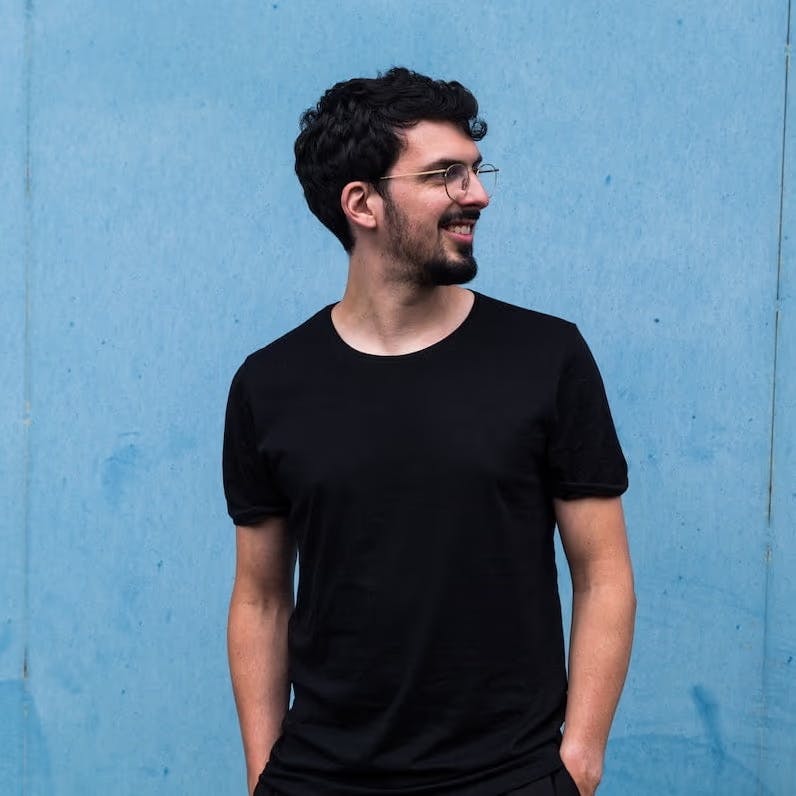
Antoine Pierre is a prominent figure on the Belgian jazz scene, having played with acts such as TaxiWars, Joshua Redman, and Ben Wendel, as well as leading his own group Next.Ape. Now, with the help of Sensory Percussion, he is stepping out as a solo performer with a new self-titled EP under the moniker Vaague.
Tell us a little bit about your musical background and how you first started using Sensory Percussion.
I am originally a jazz drummer. Even though "jazz" has a very broad meaning, I'd say I'm used to more acoustic contexts with a lot of improvisation, whether it's more traditional jazz or more "modern jazz" so to speak.
When I started my first band Urbex 6 years ago, I had this great guitar player, Bert Cools, who was experimenting a lot with electronics. One day, we were on a tour and he brought this vintage keyboard with him. I remember laughing and telling him, "Oh, so now you're gonna play keyboard in my band, huh?" and he went "Well, it's actually my new guitar sound!" He had mounted this midi interface on his guitar so he could either play with his regular sound or switch to a keyboard sound. I was literally blown away: all of a sudden, all the music I had written had a very distinctive and unique sound melting acoustic and electronic colors.
I began to think about how I could augment my acoustic drum sound. I started to look around for triggers and while wandering on Youtube, I stumbled upon this video of Marcus Gilmore playing Sensory Percussion sensors. I remember being struck by how fresh and open it sounded. I started to look further and discovered what Ian Chang and Kendrick Scott were doing as well and I thought, "Hey, this might be the thing I'm looking for!"
I bought my first sensors and then COVID happened. So I had plenty of time on my hands to learn and explore how to use Sensory Percussion in my compositional work!
What is the artistic statement/concept behind Vaague? It's a solo project, so why not just be Antoine Pierre? What appealed to you about using a moniker?
I started writing and experimenting with this music at the beginning of a huge worldwide crisis. We had all this contradictory info coming from all sides, a bit like the tide. News comes and goes, slapping you in the face until the next one comes in the next day and erases the previous one as if it had never happened. I began to realize that this was always how the world was functioning and this led to "Vague" which means "wave" in French.
Now, in English, it also means vague as in "ambiguous" and I didn't want that.
I live in Belgium, a very small country where the two main languages are French and Dutch. I wanted to emulate that vibe by doubling the "a" which is something really typical for a lot of words in Dutch. There it was: Vaague.
I decided to use this name for the project as a way to break with my "jazz character." Playing that music under a moniker allows me to find this electro alter-ego and emancipate myself from the jazz cat that I normally am, it gives me more freedom!

You've played with groups like TaxiWars, Next.Ape, and guitarist Philip Catherine. How does playing solo compare to being part of a band? Do you like having complete control? Do you feel like it's more pressure on you without any bandmates on stage?
When you're in a band, it's always a thrilling experience to actually grow the music together and to find new ways of approaching the music. You can rely on the others on stage to inspire you and relieve you from whatever fear you might have; it's like holding hands and jumping into the void!
Now, being alone in a band is a completely different experience. I do indeed feel like I have complete control, but that's also one of the things that makes it difficult. The decision making becomes a real challenge!
I had to spend countless hours to come up with songs that I actually liked to listen to after having played them. After a while, I realized that the fact that I was alone sometimes kept me from validating some things that were actually cool.
I was a bit too close to the working process to actually get the necessary hindsight to be able to like it . I started to get out of my bubble and ask around with different producers, musicians, and non-musicians for their advice. It helped me a lot to build trust with myself and to use my doubts as a weapon to get creative.
For the live situation, it is indeed really strange to be the only person on stage. Especially for the energy, you have to build this stage vibe all by yourself. I'm still at the beginning of this process but after a few gigs, I can already feel that I'm starting to find my benchmarks.
Although it's obviously a drum-based project, a lot of the Vaague tracks seem to have pretty specific progressions and compositional structures. What is your process for writing these? Do you write them at the piano and then export to the drums?
I'm really a harmony lover; that's usually what I get goosebumps from. That happens with rhythm too, but not as much as with chord progressions. I used to write music at the piano, but I really wanted the process of Vaague to be exclusively created in Sensory Percussion first. So I spent a couple hours every morning for a few weeks sampling piano chords, guitar chords, orchestra chords and so on. Then I'd start the drag-and-drop process in SP and mess around with the pitch and the reverse knobs of the sampler. At that point, I would jam with the material and sometimes, in all randomness, the core of an idea would emerge from that jam. I'd record it and start living with it until I could come up with other sections and so on. In a way, I wanted to create the vibe that a real band would have if they were jamming together and all of a sudden find something that feels good in the playing.
There are a lot of really interesting manipulated vocal chops and atmospheric acoustic samples on the Vaague EP that float on top of the various drum grooves. Did you record these yourself before processing them with Sensory Percussion?
Yes, I sampled everything myself. I wanted to bring a more human feel to the music rather than just having drums and electronic sounds. I wanted to use some material from topics that mean something important to me. So, in "Shaades," you can hear a few words of Toni Morisson, whom I really admire as an author and a thinker. In "Camaraade," samples come from a play by David Murgia, a Belgian comedian who's performing this amazing one-man show about human rights.
Some of my voice is in there too (the singing part!). After years of being a backing vocalist in bands like TaxiWars and Next.Ape, I wanted to emulate that vibe in the chorus of "Camaraade."
We've seen some cool photos of your Sensory Percussion setup in the recording studio. Is there a big difference between what someone would hear at one of your live shows vs. on the recorded EP? Or do you have the same approach to both the studio and the stage?
I actually had to find the good way to go about it. At first, I recorded the songs live, with no click, as if it was a live performance. At that point I wasn't too happy with the result: although it was really warm and had that nice "live" vibe to it, it was a bit too much info and I feel like I was a bit too inexperienced to nail a good take…
Later on, I tried the rigid approach which was going into the studio again and layering everything from scratch. But then it sounded a bit too square or systematic; I didn't get the excitement from it.
Eventually, I decided to go a third time into the studio and do a mixture of both. I basically played the songs in their most simple form (drums, bass notes and some chords) on a click-track. I'd choose the take that sounded the best and started the producing aspect of it: layering melodies, vocal samples, additional vocals, atmospherics and field recordings and so forth. By doing so, I could go deeper into the elaboration of the songs and the editing got easier.
Afterwards, I re-built all my SP kits to be able to play off the studio version of it. It's funny because, now that these songs are actually out and are a thing on their own (see the "song that doesn't belong to me anymore" situation I was talking about earlier), it's way easier for me to imagine new ways of playing them or even doing my own remixes.

Your live shows and videos have an impressive lighting/projection setup. How did you start working with visual artist Nils Houtteman and what was that process like? Is any of that controlled by Sensory Percussion?
I became aware of Nils' work a few years back when he sent me this video of an exhibition he did. He had built dozens of robots that were controlled by a midi track and would react to midi signals in real time. They were programmed to do things on their own according to the music. It was insane—even a bit scary! When Vaague was becoming a concrete idea and we needed a live show, I already knew I wanted to do something with him.
We had a few sparse artist residencies to try out some stuff. He started picking up the midi signal from SP and thinking of how to use it. He came up with this idea of me being surrounded by LED bars that could move in almost all directions. He actually built them from scratch with all the little engines and everything! It was crazy to see these LED bars moving and switch on and off according to how hard I would hit the snare, for instance!
Then we added the video aspect of it. The fun part was discussing the artistic purpose of each song and trying to find the visual material for them. So we started looking around and he created some videos and 3D animations that he could actually move to the LED bars as well. In other words, whatever displays on the screen can be reflected in the LED and be used as lights.
We had this one deadline for a big release show at Botanique, which is kind of a temple for rock and electro here in Brussels. Because we didn't have the time to explore everything yet, we had to focus on really simple controllers in SP such as velocity or speed. According to him, we're using 25% of the potential of his machinery!
Now we're planning new sessions of work to prepare the Spring of 2022.
Antoine's Gear:
- 20'' kick drum with a SP trigger
- 14'' snare drum with a SP trigger
- 14'' silent drum with a mesh head with a SP trigger
- 14'' side-snare (tuned pretty low, I also use it as a tom)
- hi-hat, a flat ride, a couple of stacks, and a crash
- Roland BT-1 to activate a single zone on the remaining channel
What's one thing you wish someone would have told you before performing live with Sensory Percussion for the first time? (Or any general tips/hacks you have developed)
Ah, that's one funny but also accurate question! I think it's more in the working situation that this question occurs. SP has SO MANY possibilities that you can easily get lost in the practice. It would be like wanting to read each and every book on earth. I had to limit myself to some parameters I really liked in the first place and it's in that constraint that I started to find my own work flow.
In terms of my own hacks, I guess the one thing that I've come to use a lot in my kits are the "ghost samples" or empty samples if you will. Since I wanted to be able to improvise and therefore get surprised by SP as if it were the other musician in the band, I had to come up with ideas to break the systematics of the samplers.
I create a lot of sequences of samples in the samplers but it tends to get too full or too fixed, and the random function of the sample doesn't keep you from that feeling. Ghost samples allow me to break that.
For example, if I have a bass line set up to my kick drum, and I don't want it to be too full or rigid, I would drag a few ghost samples in the sequence so my bass drum would be alone sometimes, regardless of any other controllers (such as velocity, speed or whatever). That can also break the 16-step sequence and allow you to have interesting rhythmical displacements in the lines.
Anything else you'd like to share about your EP, live shows, or Sensory Percussion in general?
I'm actually entering studio in a couple of weeks to work on the second EP. I will have a couple of guest appearances on this next one and I'm really excited about it!
